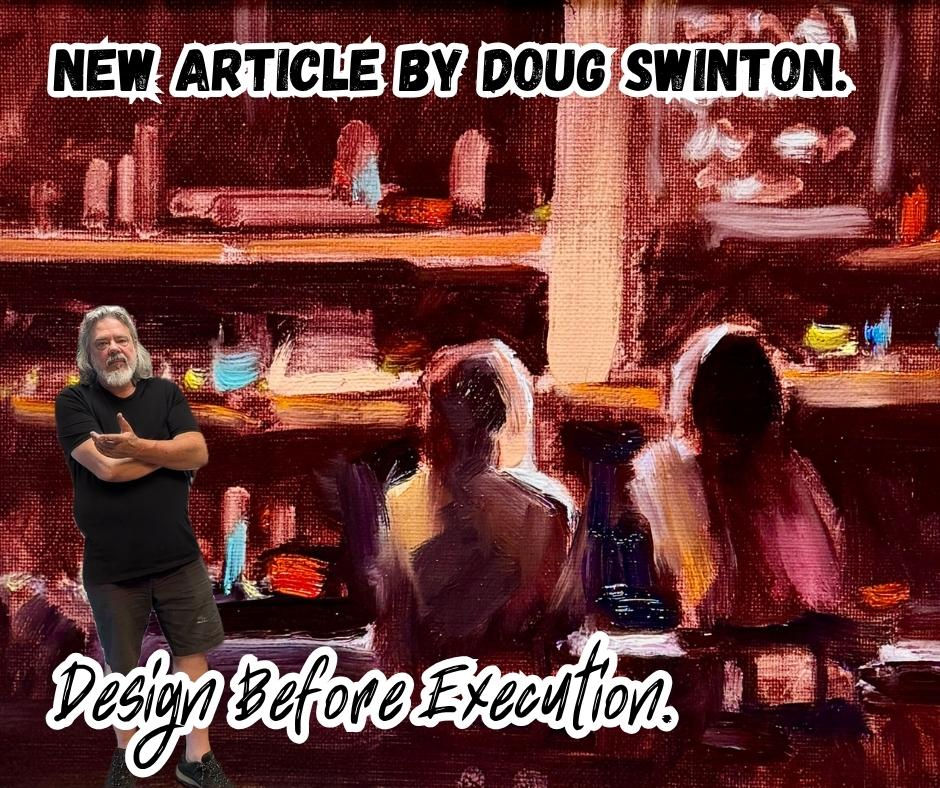"I Thought I Had Lost You" - Finishing A Good Start
- Doug Swinton

- Nov 10, 2018
- 3 min read
Updated: Mar 21, 2021
By Chantel Lynn Barber

I love teaching workshops. I love getting the opportunity to share my passion with others, and in the process, I learn so much from the students. They offer me visuals in areas I know I myself struggle with. Seeing them work through these issues has helped me develop certain practices in my own studio. In painting, it is easy to fall into bad habits. The main issue that arises time after time is "finishing a good start" or keeping an initially successful painting from ending poorly.
Here are some invaluable suggestions:
Allow 20-30 minutes to begin a painting and then step back and evaluate your start. If I don't force myself to do this, I inevitably end up ruining a strong start. I am not saying this is easy. In fact, I believe every artist should have someone standing behind their easel who can drag them away, by force if necessary, after the 30-minute mark has passed. What exactly are you looking for in this evaluation? Look for areas that are already reading strongly. These may still need minimal work or no work at all to remain strong. If minimal work is needed, write down exactly what you feel needs to be done in order to help you think through it. Next, look for areas that are weak or unfinished. Ask yourself why these areas bother you and what can be done to improve them. When you pick up the brush, begin making these improvements rather than muddling in areas already strong.
Wipe off any stroke that is offensive. This is a biggie. Don't continue to blend away the stroke hoping it will improve. More often than not it will become more muddled than it already is. In I Thought I Had Lost You, that is exactly what happened. This painting is aptly titled because I actually did think I had lost her. I allowed several areas to build up in not only an unsightly fashion but also a confused mess. In order to save the areas that remained strong, there was only one option available. I had to wipe, scrape down, and sand the areas off. It was not easy to remove strokes I had laboured to put there, but it was absolutely necessary. Why? Because I had allowed a good start with strong, energetic, fresh brush strokes to decay into a garbled mess.
Constantly check and see how your painting is reading from a distance. Looking at your work from a distance reveals mistakes that you cannot see when you are nose to nose with the piece. My grandma gave me some of the best painting advice - and she wasn't even an artist. She asked why was I so close to my painting, it seemed as if I was suffocating it. As a young artist, I took offence and promptly replied that that was just the way I painted, thank you very much. Afterward, I began to think about what she had said. It actually made sense. Why was I right on top of the painting suffocating it? How many of my viewers would look at the finished work nose to nose? I began to wear a path in front of the easel always moving back to see how a stroke was reading from a distance. Did the stroke make things look stiff? Was the value correct? Did it create the nuance I was working to achieve? One of the greatest compliments I have received as an artist is when a student offered this up - "You are like a cat circling the easel, you analyze it, and then rush forward and apply the perfect stroke." I hope that at some point that can be said about all of us who struggle with finishing a good start.
Chantel Lynn Barber

Chantel is currently the Tennessee State Ambassador for the Portrait Society of America, and is also a member of The Chestnut Group, and the American Impressionist Society. She is past President of Artists' Link in Memphis, Tennessee.
This comprehensive three-day workshop is designed to share tips and techniques learned from over twenty-five years of working in the acrylic medium. Chantel’s gentle teaching style will enrich the painting skills of beginners and advanced artists alike as she demonstrates painting the portrait from reference photos, without losing the energy and [...]








Random Name Generator is a convenient online tool that instantly provides diverse name ideas for your needs. Whether you're creating novel characters, game roles like Drift Boss unblocked, or new projects, it generates unique options to keep your creativity flowing.
AV在线看 AV在线看;
自拍流出 自拍流出;
国产视频 国产视频;
日本无码 日本无码;
动漫肉番 动漫肉番;
吃瓜专区 吃瓜专区;
SM调教 SM调教;
ASMR ASMR;
国产探花 国产探花;
强奸乱伦 强奸乱伦;
AV在线看 AV在线看;
自拍流出 自拍流出;
国产视频 国产视频;
日本无码 日本无码;
动漫肉番 动漫肉番;
吃瓜专区 吃瓜专区;
SM调教 SM调教;
ASMR ASMR;
国产探花 国产探花;
强奸乱伦 强奸乱伦;
代发外链 提权重点击找我;
谷歌蜘蛛池 谷歌蜘蛛池;
Fortune Tiger…
Fortune Tiger…
谷歌权重提升/ 谷歌权重提升;
谷歌seo 谷歌seo;
谷歌霸屏 谷歌霸屏
蜘蛛池 蜘蛛池
谷歌快排 谷歌快排
Google外链 Google外链
谷歌留痕 谷歌留痕
Gái Gọi…
Gái Gọi…
Dịch Vụ…
谷歌霸屏 谷歌霸屏
负面删除 负面删除
币圈推广 币圈推广
Google权重提升 Google权重提升
Google外链 Google外链
google留痕 google留痕
The Hauz Khas Escorts Service often suggests a more established or professional setup, although this is not always the case. The word "service" hints at a structured approach, implying a provider and client dynamic. However, beneath this veneer can lie various ethical and legal ambiguities. The online presentation often aims for a sophisticated image, using carefully chosen language to attract a specific clientele.